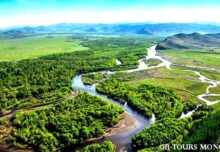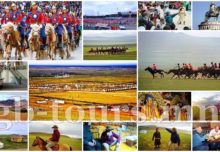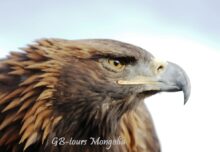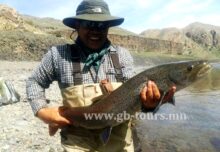“CHINGGIS KHAN” HOMELAND TOUR

“Chinggis” Khan faces to the east overlooking a range of hills said to be the area where he was born. The stainless steel statue itself is 50 meters tall (about 160 feet) and is said to be the largest equestrian statue in the world. The base of the statue holds an auditorium, museum, and gift shop. In addition to the statue, the monumental arch forming the entrance to the park is crowned with statues of the “Nine Generals”. The Generals were his field commanders and were chosen on the basis of ability. Some were fellow clansmen but others were from conquered subjects. The eventual plan is to place 10,000 (one of his 10 field armies) life-size statues of warriors in the park and on the surrounding hills. We were told that if you donated the money for a statue it could bear your face.
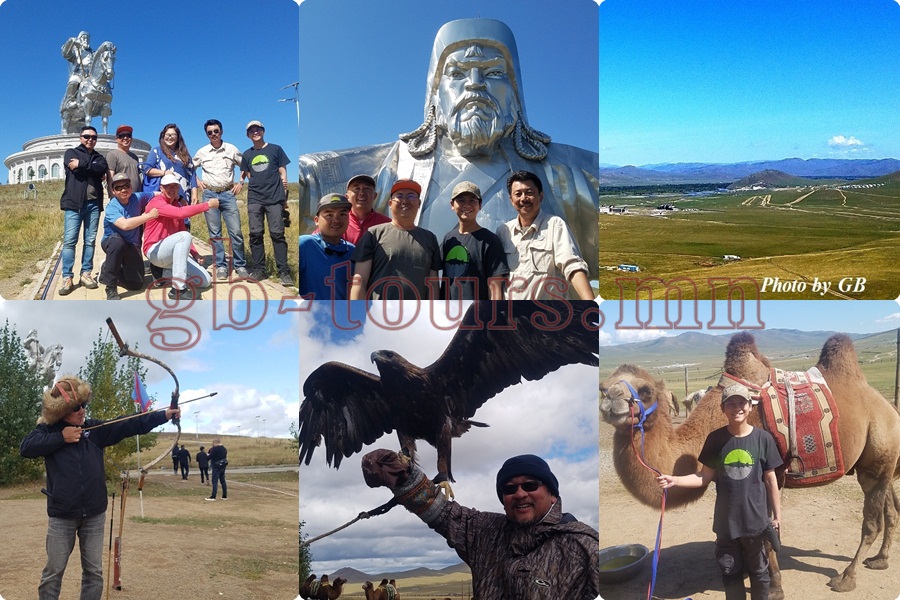
Day 1: Arrive in UB, Mongolia Transfer to the hotel. On the first day of your travels, you will be visiting the Bird exhibitions hall at the Natural History Museum and Gandan monastery. After Dinner, you have a big chance to enjoy National Folklore Concert and overnight in the hotel. (L+D)

Day-2: Terelj national park After breakfast in the hotel, driving to the Terelj National park. This is a rocky mountain area in 80 km northeast of Ulaanbaatar. The area is cool, and its alpine scenery is magnificent. Overnight in ger camp. (B+L+D)
Day-3: After breakfast drive to Mongolian Ger tourist camp near the Kherlen river On the way to Tourist camp we will drop by the Tsonjin Boldog- the Giant “Chinggis” Khan statue . Overnight in Mongolian Ger tourist camp. (B+L+D)
“Chinggis” Khan faces to the east overlooking a range of hills said to be the area where he was born. The stainless steel statue itself is 50 meters tall (about 160 feet) and is said to be the largest equestrian statue in the world. The base of the statue holds an auditorium, museum, and gift shop. In addition to the statue, the monumental arch forming the entrance to the park is crowned with statues of the “Nine Generals”. The Generals were his field commanders and were chosen on the basis of ability. Some were fellow clansmen but others were from conquered subjects. The eventual plan is to place 10,000 (one of his 10 field armies) life-size statues of warriors in the park and on the surrounding hills. We were told that if you donated the money for a statue it could bear your face.
Day-4: Drive to the Great “Burkhan Khaldun” Mountain and its surrounding sacred landscape
We will drive from the tourist camp to “Burkhan Khaldun” Mountain. Hiking to the Dund ovoo`s (shamanic rock cairns)“Burkhan Khaldun” mountain. Overnight in Tent camp in a wild place. (B+L+D) “Burkhan Khaldun” mountain is considered to be the birthplace of “Chinggis” khan, as well as one of the rumored locations of his tomb. This mountain is rich in archaeological history, with over 800 burial sites identified by archaeologists. The mountain is located in the 1,2 million hectares Khan Khentii Strict Protected Area established in 1992. This mountain is considered the most sacred mountain in Mongolia because it was first designated as sacred by “Chinggis” khan. The site is situated in the north-east of the country in the central part of the Khentii mountain chain where the vast Central Asian steppe meets the coniferous forests of the Siberian taiga. “Burkhan Khaldun” is associated with the worship of sacred mountains, rivers, and ovoo-s (shamanic rock cairns), in which ceremonies have been shaped by a fusion of ancient shamanic and Buddhist practices. The site is also believed to be the place of “Chinggis” Khan`s birth and burial.
Day-5: Drive back to tourist camp and visit a Mongolian herders family. Overnight in camp. B+L+D
Day-6-7: Drive to the Blue lake
Drive to Blue lake of Khar Zurkhen mountain. Relaxing and hiking around the lake. Overnight in tourist ger camp. (B+L+D)
Blue lake The full name of the lake is the Blue Lake of Black Heart. Black Heart is the pointed topped mountain on the north side of the lake. Blue Lake is a very important place in Mongolian history particularly of “Chinggis” Khan (Genghis Khan). Here Temujin (“Chinggis” Khan’s childhood name) was given the title, “Chinggis Khan”, and was invested as a “The Great Khaan of all Mongolia” in 1189. The stone ruins of a Ger with a diameter of 15 meters on the south side of this lake could be the ruins of the palace Ger where “Chinggis” Khan was proclaimed khan. There are also wooden statues in the forest dedicated to “Chinggis” Khan and the next 32 khans of Mongolia. The surrounding area of Khukh Nuur is quiet, peaceful, and wonderful for hiking & relaxation.
Day-8: Drive to the “Baldanbereeven” monastery
We will visit “Baldanbereeven” which is one of the oldest monasteries in Mongolia. Overnight in tourist Ger camp. (B+L+D) Baldan Bereeven Monastery is a Gelugpa (Yellow Hat) Buddhist monastery located in the Baruun Jargalant River valley Ömnödelger district, Khentii Province, Mongolia. First established in 1654, the monastery grew to be one of the largest and most important in Mongolia at its height in the mid 19th century, housing up to 8000 monks. The monastery and temple complex was destroyed by Mongolia’s communist regime in 1937. The monastery grounds are surrounded by scenic and sacred mountains including Munkh Ulziit, Arvan Gurvan Sansar, Bayan Baraat, and Bayan Khangai, all part of the Khentii mountain range. The four mountains are said to resemble animals: a lion on the east; a dragon on the south; a tiger on the west; and a Garuda on the north. The monastery itself is backed by the steep cliff of Munkh Ulziit mountain where many cliff carvings, stone carvings with different images of Buddhist gods, inscriptions of religious mantras, and a large Soyombo symbol can be found. By 1850 when its main temple was remodeled, “Baldanbereeven” reached its peak as a teaching monastery. It contained four separate colleges and more than twenty temples with a monastic population reaching nearly 8000. Around the year 1900, an epidemic wiped out half of the monastic community leaving between 2000-3000 monks. “Baldanbereeven” remained off-limits for nearly six decades. Following the democratic revolution in 1990 a handful of older monks who were removed from “Baldanbereeven” as young boys in the 1930 s returned to the monastery. Restoration efforts for several of the monastery’s main temples began soon after. In 2012 “Baldanbereeven” Monastery and the surrounding area were placed on the tentative list to be nominated as a UNESCO World Heritage Site.
Day-9: Back to UB city Driving back to Ulaanbaatar city. Shopping. Evening cultural performance. Overnight in hotel. (B+L+D)

Day-10: Transfer to Airport. Flight from Ulaanbaatar city. (B)
Services included in the price:
- Hotel charge of 2 nights in UB city
- Shared accommodation in tourist Ger camp
- Air-conditioned and comfortable Toyota-Land Cruiser 100
- Airports pick up and drop off service
- Guides: English, Japanese, Korean, Chinese, Russian speaking guide service
- All meals: meals as listed in the itinerary Finest Western and Mongolian meals. Daily supply of bottled water: 3 x 0.5 bottle per day and Hot coffee and tea
- Entrance fees: To all scenic spots as listed in the itinerary such as museums, parks, concert, monasteries, strictly protected areas, road fees
- Horse Ride, Camel Ride
- Invitation letter for an entry visa to Mongolia
Services not included in the price:
-
- Mongolia entry visa fee
- Personal expenses: Such as laundry, alcoholic drinks, telephone calls, optional activities, sightseeing, or meals that are not included in the tour itinerary
- Travel insurance: Our clients are recommended to get travel insurance coverage from their local insurance companies before traveling
- Single Ger /Yurta/ supplement: Single supplement is available at $35 per night at Ger camps







